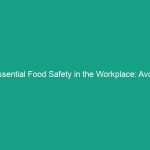Good Morning Team!
Today, we’re going to dive into an important topic that affects all of us here: Essential Guidelines for Documentation of Safety Training: Maintaining Accurate Records. This discussion is vital for ensuring our workplace remains safe and compliant with Regulations.
The accuracy of our Safety training documentation can directly impact our operations, our safety culture, and ultimately, our well-being at work. So, let’s get started!
Understanding the Importance of Safety Training Documentation
Documentation of safety training is the process of recording all activities related to safety training and ensuring all employees are adequately trained in safety protocols. It is essential for several reasons:
- Accountability: Accurate records hold everyone accountable for their training and safety practices.
- Compliance: Many regulatory bodies, like OSHA, require documentation to ensure compliance with safety Standards.
- Improvement: Reviewing training records helps identify areas for improvement in our safety Procedures.
Many employees may think that documentation is just one more administrative task. However, maintaining accurate records can save lives and prevent injuries.
Key Hazards, Risks, and Safety Considerations
When we talk about safety training documentation, we must also consider the Hazards and risks associated with inadequate records. Some key points include:
- Inadequate Training: Without proper documentation, we cannot ensure that every employee has received the necessary training. This could lead to untrained personnel handling hazardous materials or operating machinery.
- Legal Consequences: Failing to maintain accurate records can result in legal penalties, fines, and damage to our company’s reputation.
- Increased Risk of Accidents: Poor documentation can lead to misunderstandings and miscommunication regarding safety procedures, increasing the likelihood of accidents.
The real-world consequences of ignoring safety documentation are serious. For instance, in a previous case, a company faced significant fines after an employee was injured due to a lack of documented training on machinery Operation.
Best Practices, Procedures, & Actionable Advice
So, how can we maintain accurate records of our safety training? Here are some Best Practices:
1. Create a Comprehensive Training Plan
Your training plan should outline all necessary safety training sessions, including:
- Types of training required for each job role
- Frequency of training sessions
- Methods of training delivery (in-person, online, etc.)
2. Use Standardized Documentation Templates
Utilizing standardized forms for training records ensures consistency and completeness. Each record should include:
- Name of the employee
- Date of training
- Type of training conducted
- Trainer’s name and signature
3. Regularly Review and Update Records
It’s important to regularly review training records to ensure they are up-to-date. Schedule periodic audits to:
- Verify that all employees have completed required training
- Assess the effectiveness of training programs
- Identify any needed updates or additional training
4. Incorporate Technology
Consider using software solutions to track training documentation. These tools can:
- Automate reminders for training renewals
- Provide easy access to training records
- Generate reports for audits
For example, a construction company implemented a digital training record system and reduced time spent on documentation by 40%.
Regulations, Standards, and Compliance
It’s crucial to be aware of the regulations surrounding safety training documentation. Here are some key points:
- osha mandates that employers maintain records of employee training related to hazardous materials and safety procedures.
- ISO standards may also apply, ensuring that organizations have a systematic approach to managing safety training.
- Company-specific policies may require additional documentation practices, so always check the employee handbook.
Understanding these regulations is not just about compliance; it’s about protecting ourselves and our colleagues.
Employee Engagement & Discussion
Now, let’s open the floor for some discussion. Think about these questions:
- What challenges have you encountered when documenting training?
- How do you think we could improve our current documentation process?
- Can you share an experience where accurate documentation made a difference?
Your input is valuable, and I encourage everyone to share their thoughts. After all, we all play a role in maintaining our safety culture!
Conclusion & Key Takeaways
To wrap up, maintaining accurate records of safety training is essential for our safety, compliance, and overall workplace culture. Remember:
- Proper documentation ensures accountability and compliance.
- Regular reviews and updates are crucial for effective training.
- Utilizing technology can streamline our processes.
Let’s all commit to prioritizing our safety practices and documentation. Thank you for your attention, and let’s keep our workplace safe for everyone!


